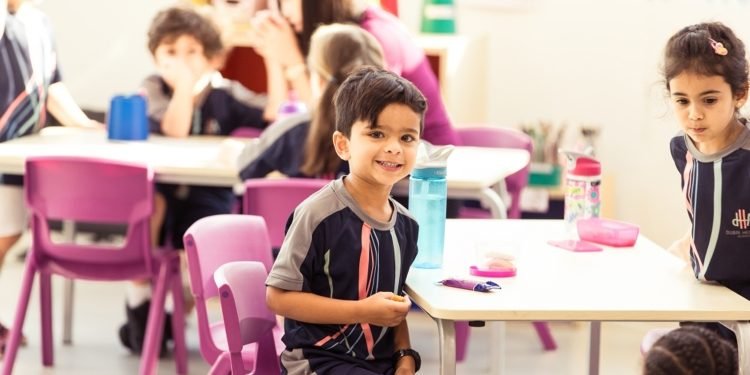Keeping the environment as green and clean as possible should be the responsibility of everyone, including children. Since they will inherit the earth, they need to lend a hand in taking care of Mother Nature as early as now.
Because of this, children, even young ones, must learn the importance of being eco-friendly and how they can go about doing so.
How to Teach Small Children About Sustainability
Teaching pre-kindergarten students environment awareness, however, can sometimes be challenging. Since they are young, they will not easily and quickly understand this concept and its importance.
The best eco-friendly IB schools in Dubai, though, ensure that they cultivate environmental awareness in their young students. Inside the classroom, teachers lead by example and implement simple, sustainable practices such as sorting waste products, recycling, upcycling, and conserving water and electricity.
Additionally, environmentally conscious schools see to it that their students learn more about taking care of nature through different fun activities.
6 Simple, Engaging Environmental Activities for Preschoolers
Below are some fun activities eco-friendly schools give Pre-K students to help them learn to be more environmentally responsible and green-minded:
1. Scavenger hunt.
In this activity, the students need to go to the school playground or garden. They have to find or collect items or perform certain activities from the list they are given in this area.
These can include gathering five types of leaves or pebbles, looking for a particular flower and counting how many butterflies they see.
Once they complete their checklist, the students should submit it to their teacher or assisting staff.
This fun activity can encourage preschoolers to think more about the world around them. Additionally, it is a great way to help them learn more and pay attention to the flora and fauna around them.
2. Insect and avian safari.
Similar to the scavenger hunt, students are brought to the school playground, garden, or nearby park. However, for this activity, the young learners have to search for insects and birds that frequent the area.
The students must look for insects and birds on a checklist and tick the box as they spot them. This activity should have a specific time limit so that the class does not spend the whole day doing it.
When the students complete their checklists, the teacher or teaching assistant will check them.
This fun activity is best done when the Pre-K students are learning about natural animal habitats.
3. Nature walk and observation.
Taking preschoolers on a nature walk on the school grounds or a nearby park is also an excellent way to teach them to be more environmentally conscious.
During the walk, the students should observe and explore their surroundings, paying attention to the plants, trees, insects and animals they encounter. They can use magnifying glasses or binoculars to enhance their observations.
Throughout the class’s outdoor exploration, the teacher and teaching assistants should guide them in identifying different types of plants, trees and animals, and discuss their importance in the ecosystem.
This activity allows preschoolers to develop a deeper connection with nature and fosters a sense of appreciation and understanding of the natural world.
4. Gardening.
Pre-K students can take a more proactive role in taking care of the environment by starting and taking care of a garden inside the school campus.
Students can plant seeds, which they have to grow and nurture, in a small plot inside the campus. It is best to provide the students with seeds of native or endemic plants so they won’t look out of place and have a higher chance of thriving.
If allowed, the class can start a compost bin in the garden. This complements the lawn and helps out the environment at the same time. By composting yard and food rubbish, preschoolers can learn how to reduce waste and turn them into something beneficial.
Through gardening and composting, Pre-K students can start taking care of nature even in a small way.
5. Upcycled arts and crafts projects.
For this activity, the students have to create something from recyclables, such as old or used boxes, bottles, or cans. The preschoolers can let their imagination run wild and create anything they want using a combination of the materials.
At the end of the activity, there will be a variety of cars, robots or boats made from old cardboard boxes and art pieces, such as collages from old magazines and baskets from newspapers.
With this activity, preschoolers can come up with their own ideas on transforming would-be trash into something functional or beautiful.
6. Games.
Finally, the right games will help preschoolers learn about environmental awareness as well.
Classifying events or activities that are good or bad for Mother Nature is a simple educational game students can play. This involves printing pictures that are good for the earth, including planting and recycling, and bad ones, such as oil spills and littering. The students will then have to sort the images into things they should and should not do to help the environment.
Letting preschoolers sort recyclables and other waste into the correct bins or containers can also help them learn more about the importance of recycling and how to do it properly.
With the right early learning center and activities, Pre-K students can embark on a promising journey toward developing a strong sense of environmental responsibility.




